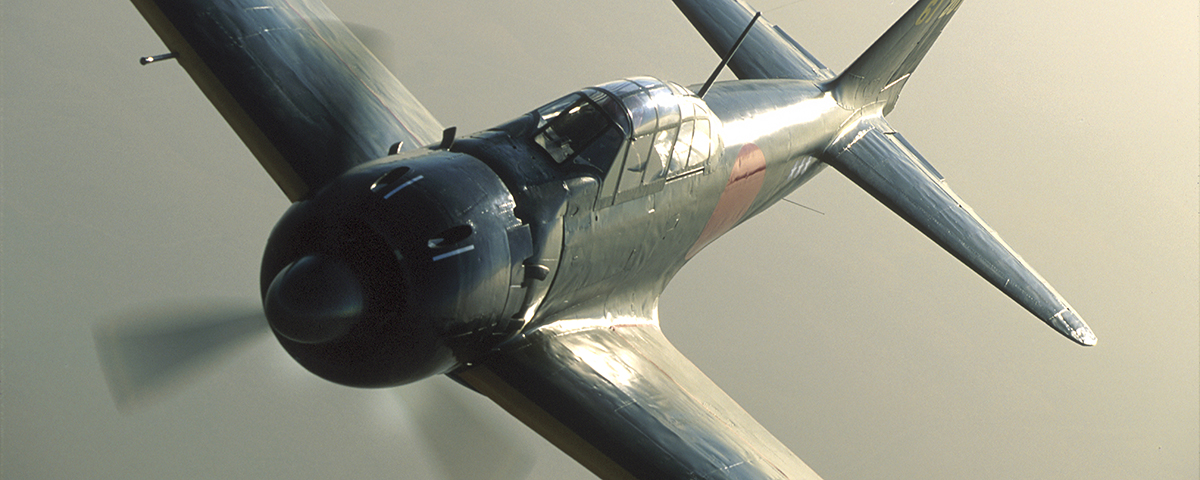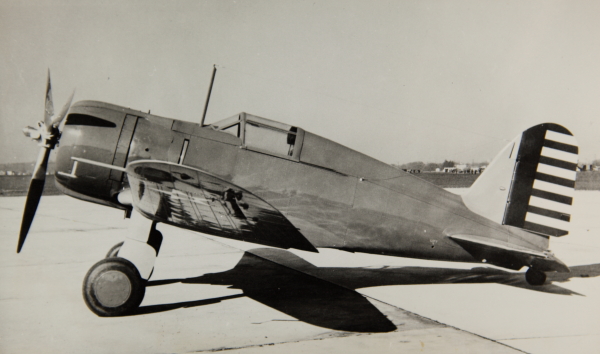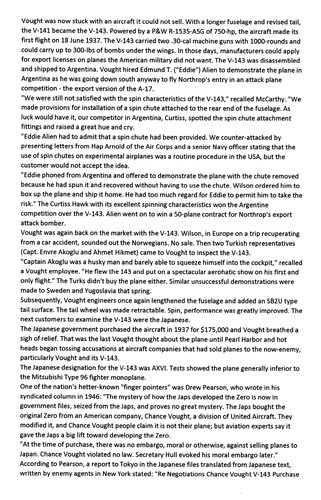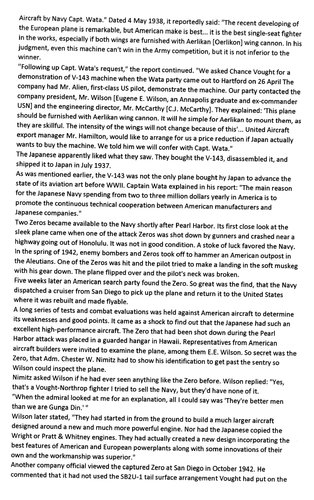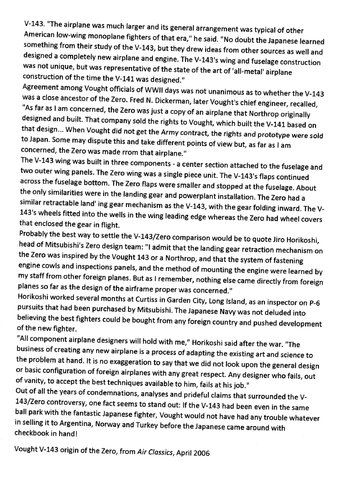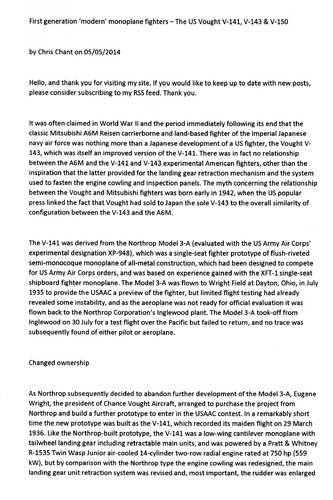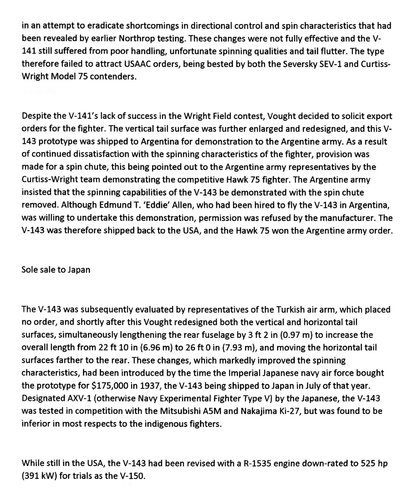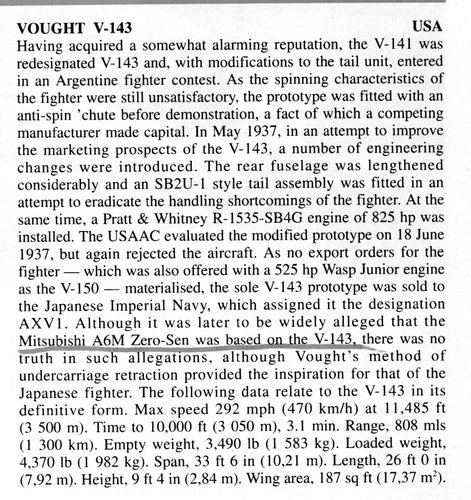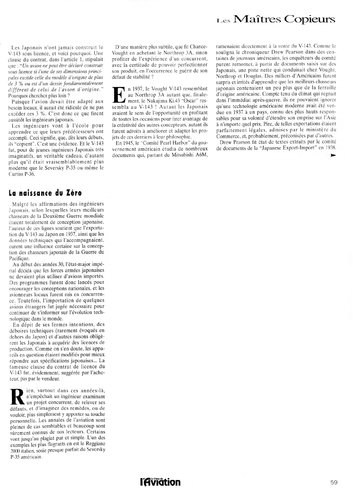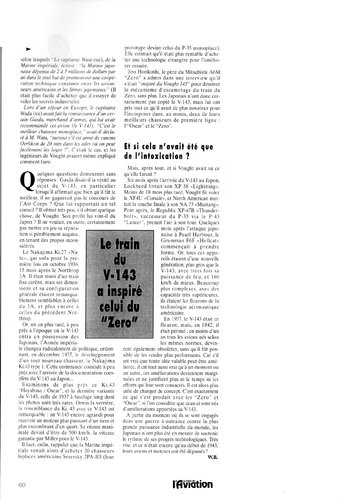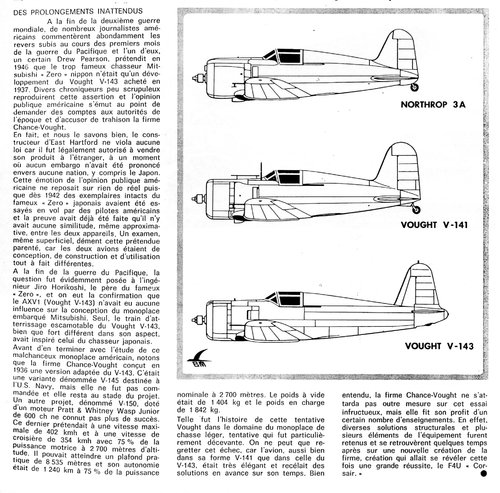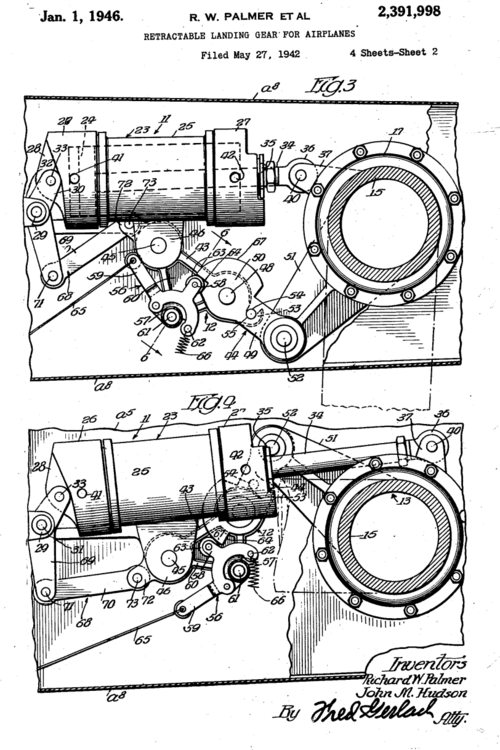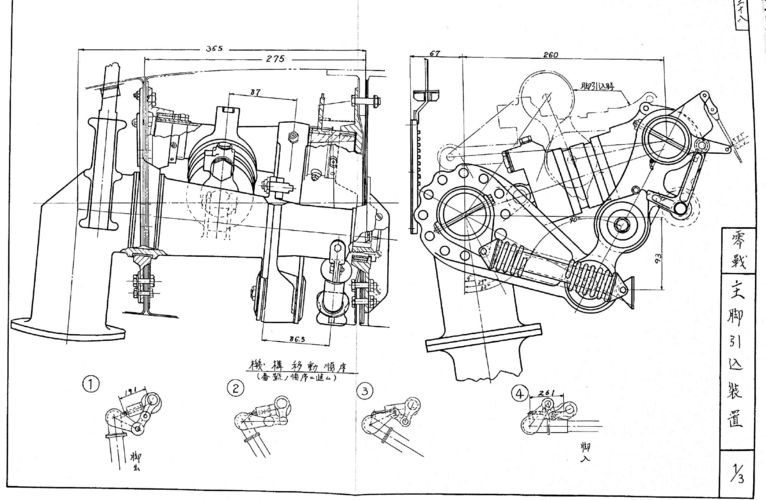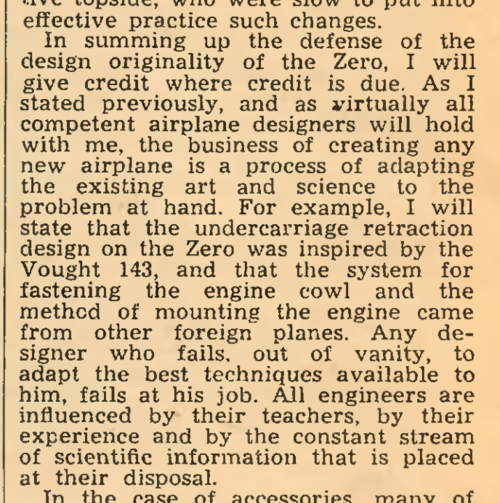In a very interresting book about building th Australian aircraft industry, Aircraft Pioneer -Lawrence James Wackett, he mentioned some interesting information concerning the Vought fighter and the Zero.
Page 142/143: I realized, however, what a superb offer had been made by the Vought Company and intended to pursue the matter with vigour when I reached Australia.
On the way back I again called at East Hartford and inquired if the offer of the fighter still stood. I was informed that aince I had not accepted it they had offered the fighter to some visiting Japanese from the Mitsubishi Company, who had readily agreed to the deal. I said nothing more at the time, but a few years later when Japan attacked New Guinea and Zero fighters appeared in numbers, shooting down our aircraft, one of these Zeros was brought down by ground fire and was recovered and sent to Melbourne in a crashed condition for technical examination. When I examined it I was amazed to find that it appeared to resemble, in detail, something I had seen before. Suddenly I remembered. The Zero was almost an exact copy of the Vought fighter.
Etc.
Very interresting detail, who can tell me more about the design history of the Zero, was it influenced by the Vought fighter?
Page 142/143: I realized, however, what a superb offer had been made by the Vought Company and intended to pursue the matter with vigour when I reached Australia.
On the way back I again called at East Hartford and inquired if the offer of the fighter still stood. I was informed that aince I had not accepted it they had offered the fighter to some visiting Japanese from the Mitsubishi Company, who had readily agreed to the deal. I said nothing more at the time, but a few years later when Japan attacked New Guinea and Zero fighters appeared in numbers, shooting down our aircraft, one of these Zeros was brought down by ground fire and was recovered and sent to Melbourne in a crashed condition for technical examination. When I examined it I was amazed to find that it appeared to resemble, in detail, something I had seen before. Suddenly I remembered. The Zero was almost an exact copy of the Vought fighter.
Etc.
Very interresting detail, who can tell me more about the design history of the Zero, was it influenced by the Vought fighter?

